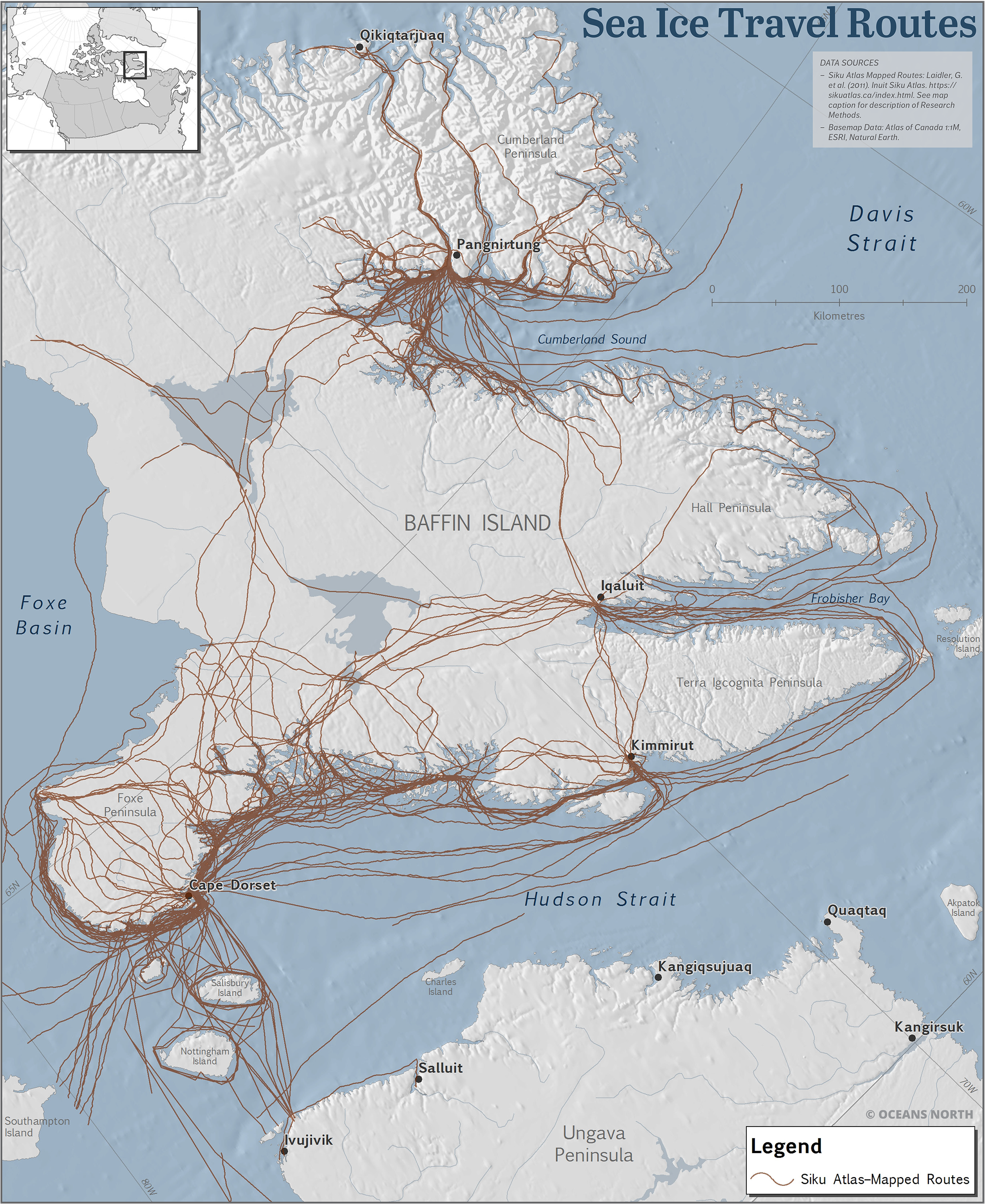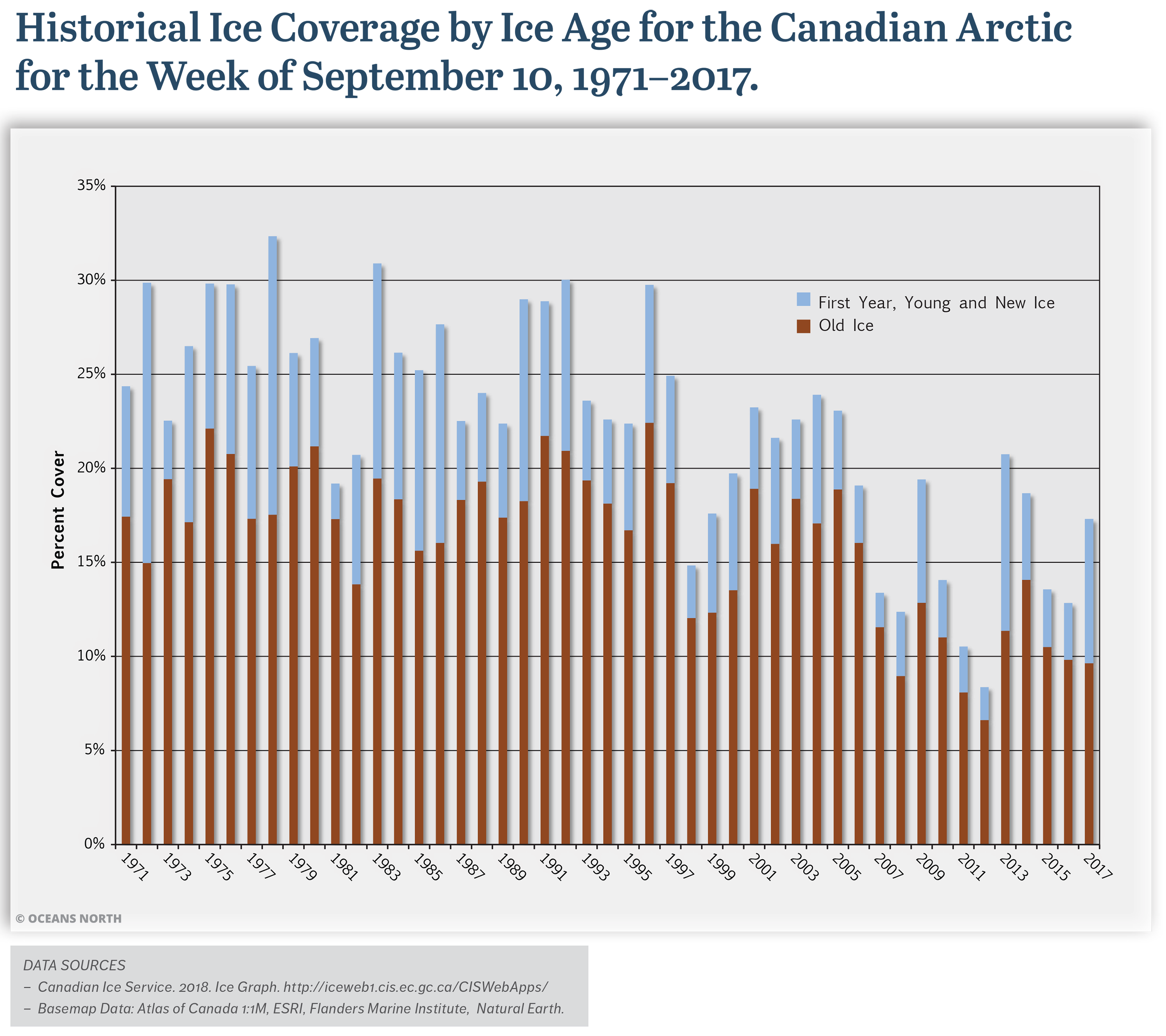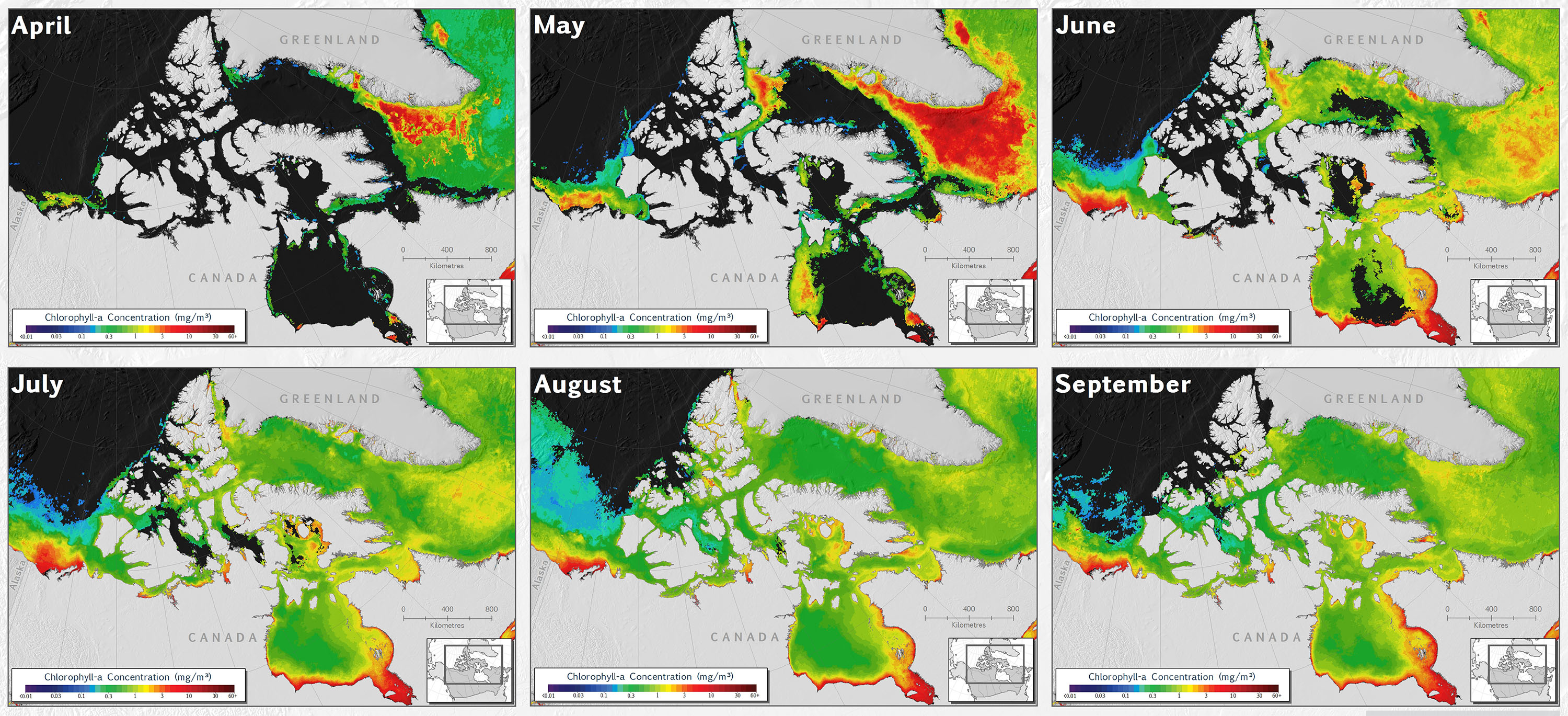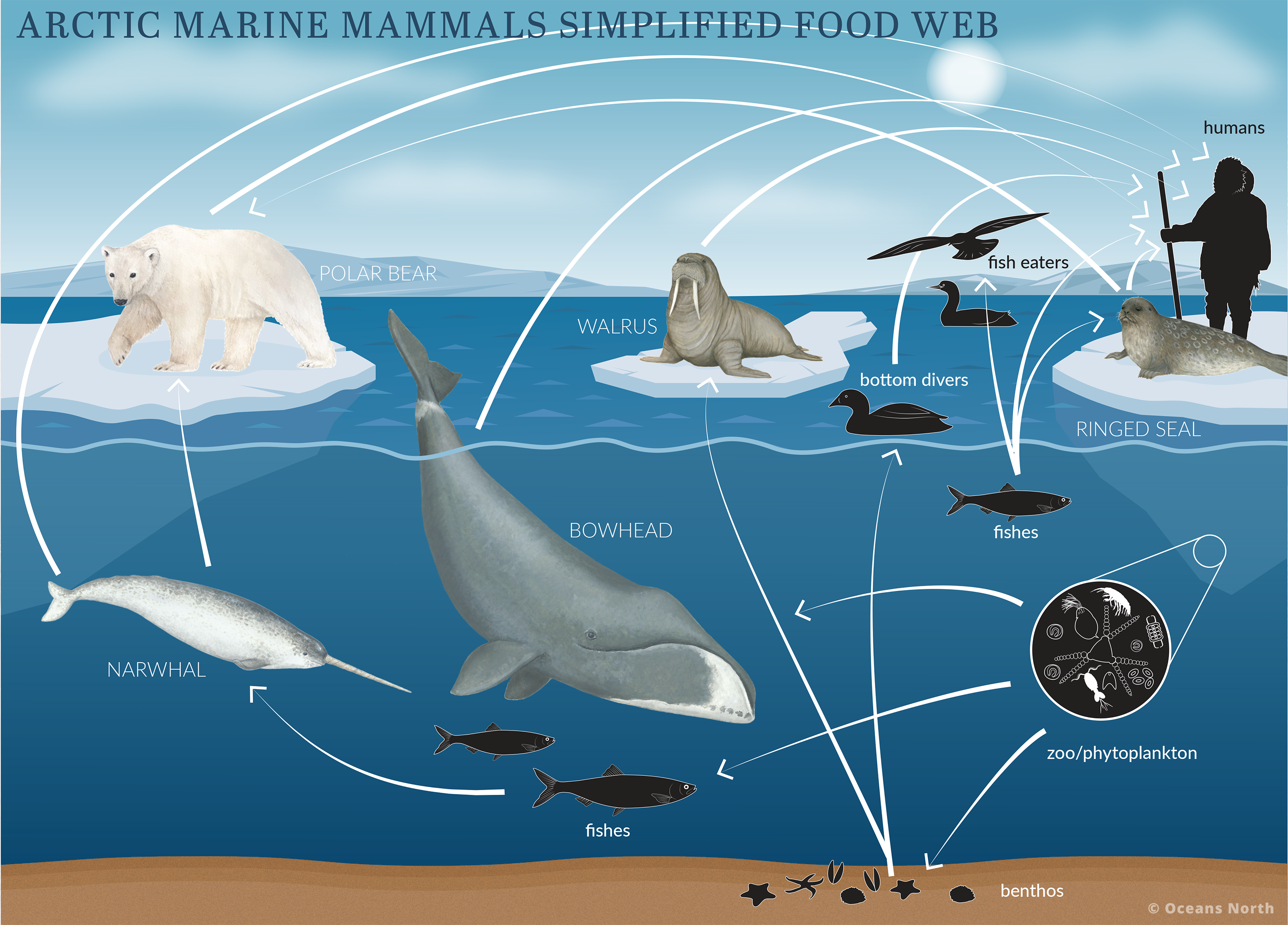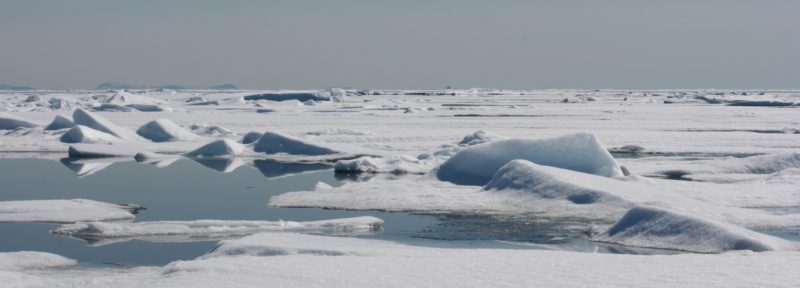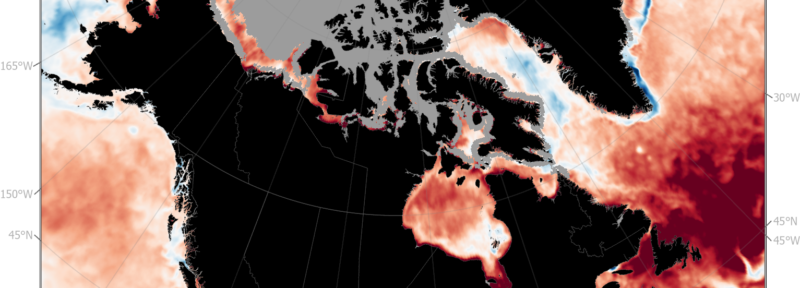Introducing Canada’s Arctic Marine Atlas
Did you know that 90 percent of the world’s narwhal summer in Canada’s northern waters? Or that the region is home to 222 species of fish, and that 22 of those types swim between fresh and salt water? All of this and much more can be found in Canada’s Arctic Marine Atlas, released today by Oceans North and our partners.
Our new atlas, published jointly with Ducks Unlimited Canada and World Wildlife Fund Canada, provides a comprehensive overview of the Arctic marine environment, from the people who rely on its natural resources to the marine mammals and seabirds that thrive there. The atlas compiles a wide variety of data into a single, accessible document that can be read in English, French and Inuktitut.
Canada’s Arctic Marine Atlas has seven chapters with 77 original maps, 67 photos, 33 scientific illustrations and three food-web graphics. Each chapter was written by experts in the field and includes maps accompanied by explanatory texts and images.
The atlas focuses on national-scale data, using information from public databases, scientific research and government sources, and is a good starting point for understanding how different species are distributed in Canada’s Arctic marine environment. More in-depth resources can be found in the reference section.
Canada’s Arctic Marine Atlas opens with a chapter on Humans and the Environment, which explains how local residents rely on a healthy marine ecosystem for hunting, harvesting, travel and as a cultural touchstone. It includes a map of sea-ice travel routes that were documented in three communities on Baffin Island as part of the Inuit Siku Atlas project, and shows the importance of the ocean for travel. Traditional place names also reflect a deep local knowledge and relationship with the land and waters. We have included a map of traditional place names from the Cambridge Bay region that were recorded by the Kitikmeot Heritage Society. This is just one snapshot of a rich tapestry of traditional place names across the Canadian Arctic.
This map shows sea-ice travel routes collected by the Inuit Siku Atlas project for three communities on Baffin Island. Source: Inuit Siku Atlas Project
Credit: Oceans North
This graph shows the proportion of first year and old ice covering the Canadian Arctic during the week of September 10, from 1971 to 2017. Data Source : Canadian Ice Service, 2018
Credit: Oceans North
This map shows traditional place names in the Kitikmeot Region that were collected by the Kitikmeot Heritage Society. Data Source: Kitikmeot Heritage Society
Credit: Oceans North
The Humans and the Environment chapter is followed by sections on Physical Oceanography, the Bottom of the Food Web, Fish, Water birds and Marine Mammals. Flipping through the atlas, one can see how species and the people who rely on them are affected by environmental factors and how each of these chapters are related to one another.
Biological hot spots occur in areas where currents, ice conditions and geography come together to make the ocean richer and more abundant. In some places, this happens because of an upwelling of nutrients or because the ocean is ice-free longer so sunlight can penetrate and nourish phytoplankton that form the basis of the Arctic food chain. For example, the images below show changes in chlorophyll-a concentrations during the year. Chlorophyll-a is a key component that phytoplankton use to make energy. Other sections of the atlas show that these same areas are important food sources for fish, water birds, and marine mammals, as well as key locations for hunting and harvesting.
This series of maps shows the monthly average chlorophyll-a concentrations in the Canadian Arctic based on satellite imagery. Data Source: NASA SeaWiFS Ocean Color Data, 2016
Credit: Oceans North
The atlas also includes three new food-web graphics that describe the roles that fish, water birds, and marine mammals play in the Arctic environment. Below, the marine mammal food web shows that not only do marine mammals consume benthic species, zooplankton and fishes, marine mammals prey on each other – for example, polar bears eat seals. Marine mammals are also an important food source for humans who live in the North.
This Arctic Marine Mammals Food Web shows the movement of energy through key marine mammal species and how each species is interconnected.
Credit: Oceans North
Climate change is having widespread and lasting impacts on the entire Arctic marine ecosystem, from increasing ocean temperatures to the loss of sea ice. Our atlas includes a brief summary of some of these changes. The graphic below illustrates how September ice coverage has decreased since 1971.
We hope this atlas will be a useful resource for understanding the richness of Canada’s Arctic marine environment. Check out the Canadian Arctic Marine Atlas web page to flip through an online copy or download your own PDF copy of individual chapters.
Olivia Mussells is a marine spatial analyst for Oceans North.

